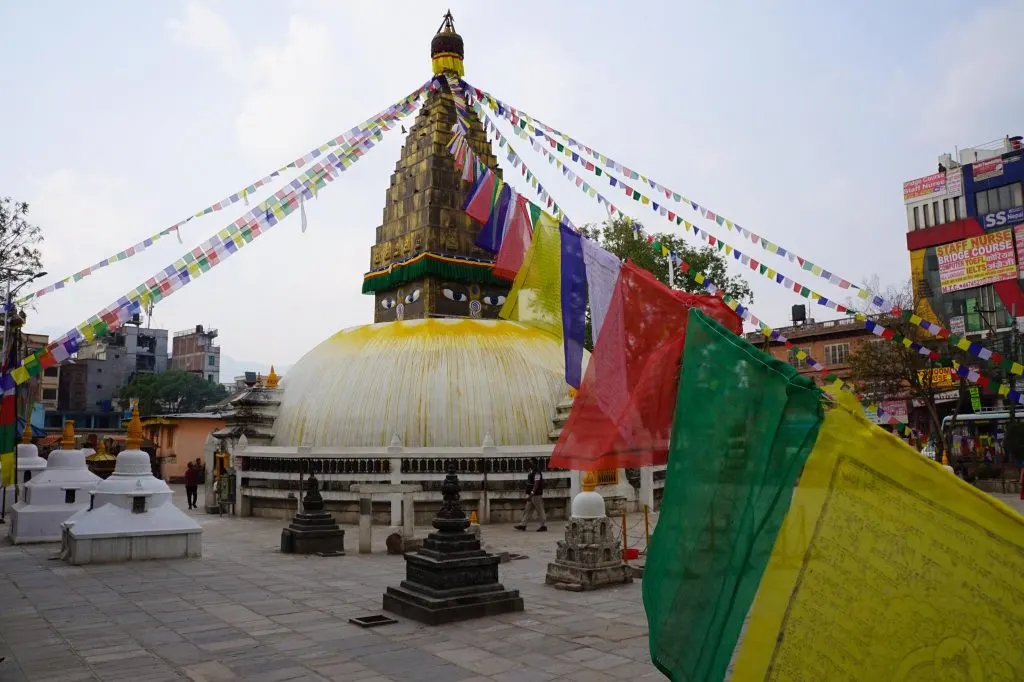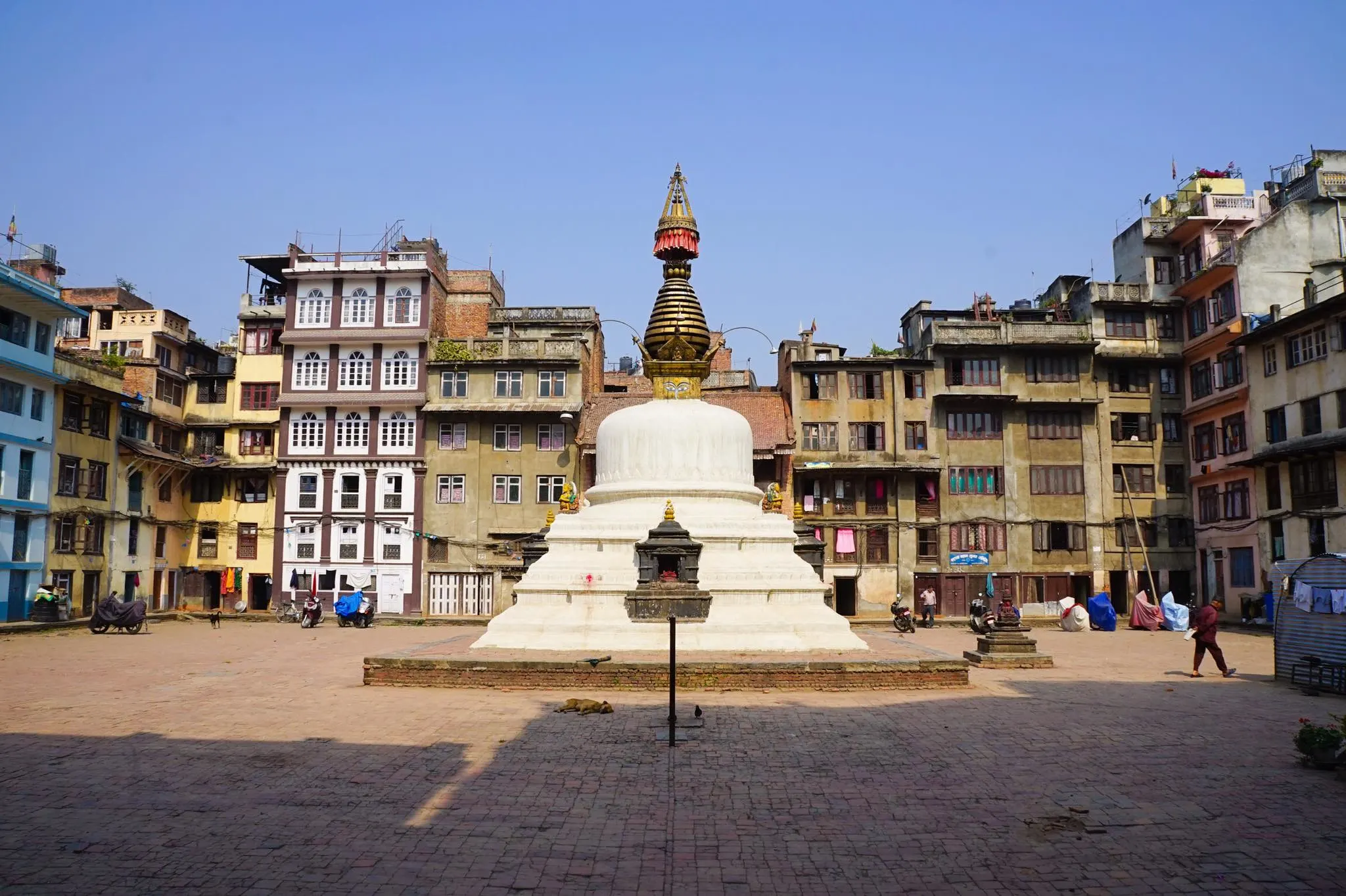Expert travel storyteller Jordan Adkins, founder of InspiredByMaps.com, brings a decade of adventures across 101 countries and 450+ UNESCO sites into rich, off-the-beaten-path narratives, melding ecological expertise with genuine, seasoned travel insights. His full bio can be found here.
Nepal is well known for its extraordinary temples, diverse wildlife, and remarkable Himalayan views. Fittingly, Nepal is also home to four of the more than 1,000 World Heritage Sites worldwide, as inscribed by the United Nations Educational, Scientific, and Cultural Organization (UNESCO).
Personally, I think Nepal is currently underrepresented in terms of world heritage. Its captivating UNESCO sites include the birthplace of Lord Buddha, mountainous national parks, and one last refuge of the Bengal tiger. But there are more unique places that could be honored with recognition in the future.
For this reason, I will also cover the tentative sites on Nepal’s wishlist — in anticipation that some are likely to be included shortly.
The theme of culture and nature is split evenly between these four inscribed sites. This reflects both Nepal’s awe-inspiring landscapes and remarkable human heritage legacy. Some of these world heritage sites are landmarks of Nepal, but one is rather obscure and likely only known to the most persistent of travelers.
While I have visited most of them myself, I have included all sites here – so you can get an idea of what makes each special.

UNESCO is a bureau of the United Nations that endeavors to support the protection and growth of the world’s intellectual and cultural property and elects UNESCO sites due to their “outstanding universal value” in science, history, or culture. As a result, UNESCO Sites are meaningful to the mutual interests of humanity – and legally guarded by international treaties.
Travel influenced by UNESCO sites allows visitors to explore esoteric spots, aid preservation, obtain specific knowledge about the history of Earth and humanity – and to wonder at unequivocally majestic sites. While a few such as the bewitching Moai of Easter Island and the ruins of Tikal are famous around the world, there are far more untouristy UNESCO sites worthy of insertion in any ‘off-the-beaten-track’ bucket list.
So, why not immerse yourself in one or more of these sites on your next Nepal vacation? From breathtaking natural wonders to unprecedented feats of human engineering, check out our exhaustive list of Nepal UNESCO sites to determine which places resonate with you personally. You can then use them as a roadmap for the trip of a lifetime.

Page Contents
Cultural UNESCO World Heritage Sites In Nepal
Kathmandu Valley
Positioned in the foothills of the Himalayas, the Kathmandu Valley World Heritage site is recorded as seven separate Monument Zones that illustrate the diverse spectrum of historical and artistic accomplishments for which the Kathmandu Valley is celebrated.
Three of the zones include the Durbar Squares and associated palaces, temples, and public spaces of the three cities that compromise Greater Kathmandu, which are Hanuman Dhoka (Kathmandu), Patan, and Bhaktapur. The remaining four zones are then the Buddhist stupas of Swayambhu and Bauddhanath and the unique tiered Hindu temples of Pashupati and Changu Narayan.
Tourists should take the time to explore each space within the site as each uniquely showcases the cultural heritage of the Kathmandu Valley. Of particular note, however, is the oldest Buddha monument in the Kathmandu Valley at Swayambhu and the largest stupa in Nepal at Bauddhanath.
As Buddhism and Hinduism evolved and adapted over the ages throughout Asia, both faiths flourished in Nepal. The result was the composure of a powerful artistic and architectural fusion that dated back to the 5th century A.D. are reached its zenith between 1500 and 1800 AD.
These UNESCO monuments of the Kathmandu Valley are the physical manifestation of this coexistence and amalgamation of Hinduism and Buddhism. They are a testament to the exceptional cultural traditions of the Newars, the historical inhabitants of the Kathmandu Valley. It is hard to miss the remnant of their urban settlements, buildings, and edifices as you wander Kathmandu, and even today, the elaborate embellishments, distinguished craftsmanship, and creative use of brick, stone, timber, and bronze draws crowds.
Sadly, the Kathmandu Valley World Heritage Site sustained far-reaching damage in the 2015 earthquakes, and many of the sites are still not fully open to the public. UNESCO is working with local authorities towards rehabilitating the monuments and locations, but this will take time.
Nevertheless, your visit to Kathmandu is essential to the protection and rehabilitation of this valuable cultural property – not only through entrance fees but also through the long-term socio-economic growth of local communities as a result of tourism.
Getting here: Kathmandu has the only international airport in Nepal and connects Nepal to more than 40 destinations in 17 countries, including major regional hubs like Hong Kong, Singapore, Doha, and Tokyo. Sadly flights to Vienna ended in 2007, along with Nepal’s last direct air link to Europe.
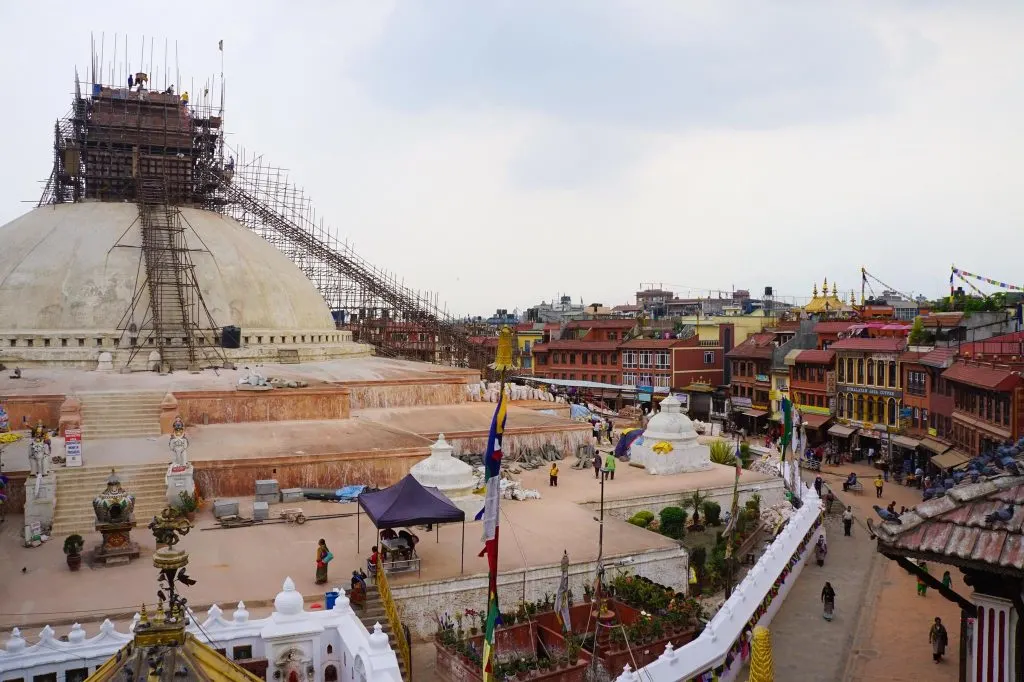
Lumbini, the Birthplace of the Lord Buddha
Lumbinī is a Buddhist pilgrimage site found in the Rupandehi District of Southern Nepal, on the Terai plains close to the Indian-Nepalese border.
It is notable as the garden where Siddhartha Gautama, the Lord Buddha was born in 623 BC. The sacrosanctity of the site was later marked by the engraving on a pillar here raised by the Indian emperor Asoka in 249 BC.
As one of the most revered places for one of the world’s great religions, Lumbini is protected as world heritage. It also provides insight into the characteristics of Buddhist pilgrimage centers from as early as the 3rd Century B.C. that sprang up in places crucial to the life of the Buddha.
The Lumbini site is 4.8 km long and 1.6 km wide and features within both older temples, including the Mayadevi Temple, which is traditionally deemed to be the exact birthplace of the Buddha and numerous new temples that have recently been completed or are still under construction.
Various monuments, monasteries, a museum, the Lumbini International Research Institute, and a sacred Bodhi tree are also found within – although the entire site is bordered by a zone in which no shops, hotels or restaurants can be built.
In this way, Lumbini is still evolving even today as a Buddhist pilgrimage center. Also, archaeological research continues to find and showcase evidence associated with the birth of the Lord Buddha. The entire UNESCO site, including the surrounding buffer zone, is owned by the Government of Nepal and run by the Lumbini Development Trust, which adds a layer of protection to this sacred site and means it should remain intact for future generations to explore and enjoy.
Getting here: Lumbini is a bumpy 10-hour bus trip from Kathmandu or a 30-minute drive from Bhairahawa, which is home to the closest airport with flights to and from Kathmandu. The Indian border town of Sonauli, which is connected to the rest of India by railway, is a 1-hour drive from Lumbini.
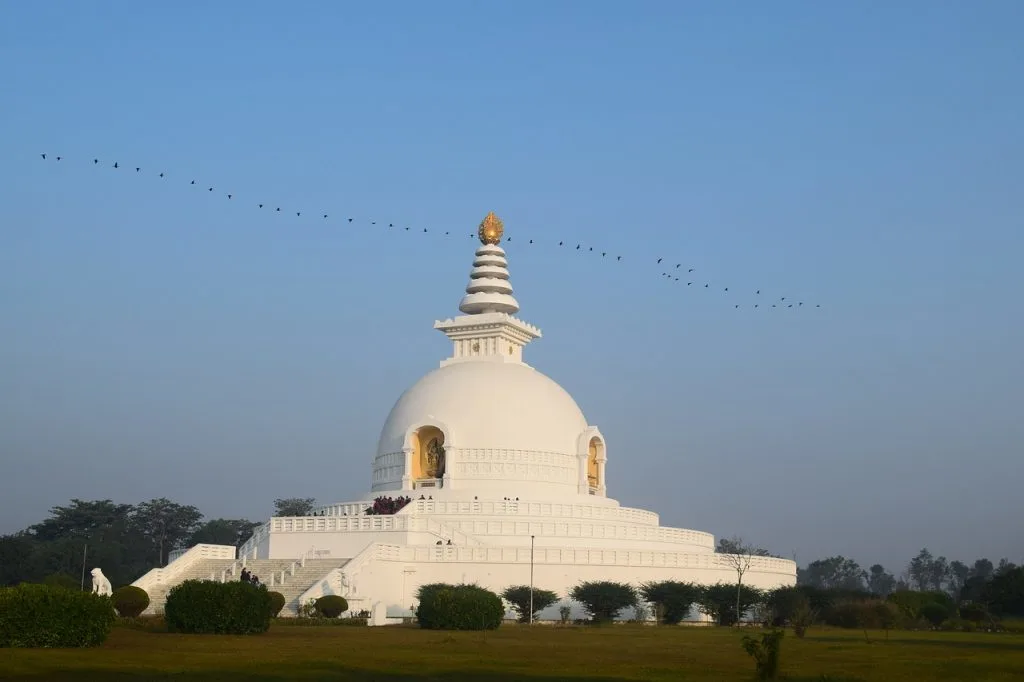
Natural UNESCO World Heritage Sites In Nepal
Chitwan National Park
At the base of the majestic Himalayas, Chitwan is one of the few surviving – and undisturbed – remains of the ‘Terai’ plains region, which extended in the past over the entire foothills of India and Nepal.
This UNESCO World Heritage site in Nepal has a particularly rich collection of flora and fauna, including over 700 species of wildlife and one of the world’s last populations of single-horned Asiatic rhinoceros. It is also one of the last refuges of the Bengal tiger (along with Ranthambore in India).
Chitwan National Park (CNP) was instituted in 1973, It was Nepal’s first National Park, and it covers a vast area of 93,200 hectares that expands across four districts. Today, Chitwan National Park is one of the top drawcards of Nepal. Visitors to Chitwan can immerse themselves in famed natural ecosystems of the ‘Terai’ region – almost as they were before human modification.
While the rest of the foothills has seen extreme change over the centuries, Chitwan remains a lush subtropical lowland sanctuary, protected by its position between two east-west river valleys at the base of the outer Himalayas.
Alluvial grasslands, subtropical moist deciduous forests, oxbow lakes, and wetlands of international importance are just some of the highlights that can be experienced here. Not to mention the chance to sight sloth bears, tigers, mugger crocodiles, elephants, rhinos, and migrating bird species from around the world.
Most tourists opt to stay on the periphery of the park and make day trips. There are also options for multi-day safaris and a select few basic overnight accommodation options within the park.
Getting here: The ‘simplest’ way to get to Chitwan is on a tourist bus from Kathmandu that takes around 5-7 hours, depending on traffic. The closest city of Bharatpur is considered an air hub for the Chitwan National Park, with a flight from Kathmandu taking around 20 minutes.
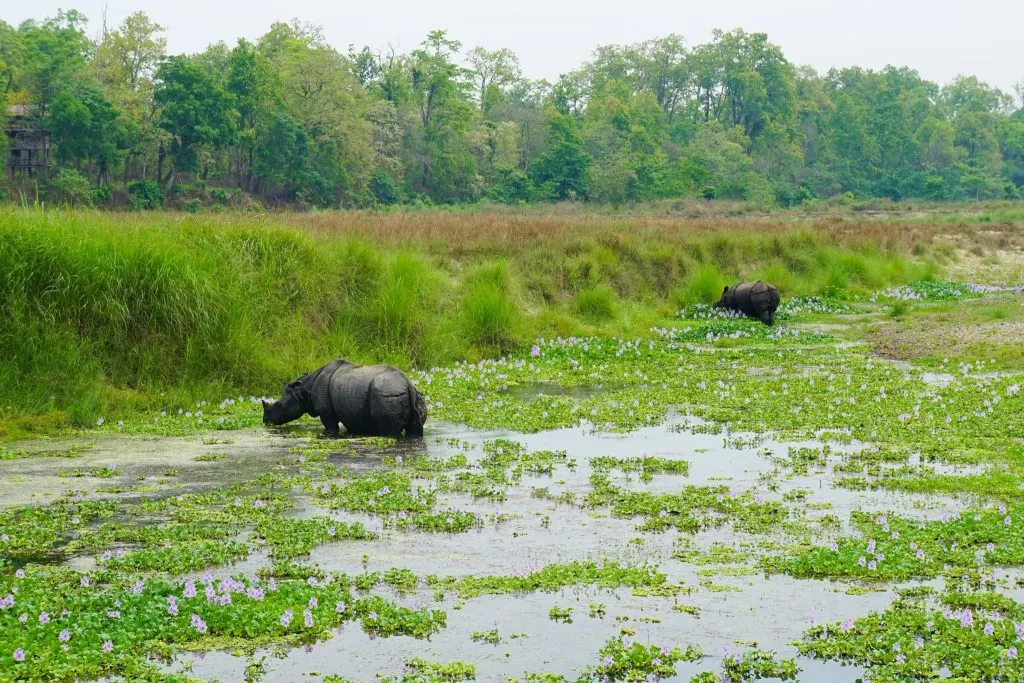
Sagarmatha National Park
Sagarmatha is an outstanding area with climactic mountains, glaciers and deep valleys, overlooked by the world’s highest peak – Mount Sagarmatha / Mount Everest. Numerous rare species, including the snow leopard and the red panda, make this place unique and worthy of protection – while the presence of the Sherpas, with their individual culture, only adds to the site distinctness.
The Sagarmatha National Park (SNP) comprises an expanse of 124,400 hectares in the north-western district of Solu-Khumbu in Nepal. There are seven peaks other than Mount Sagarmatha / Mount Everest scrapping above 7,000m in the park. While the incredible wildlife is reason to visit alone – SNP is more famous as a destination for mountain expeditions.
Tourism has been booming here since the 1960s, and today, over 3,500 Sherpa people living within the park in villages and seasonal settlements along the main trails. This is a novel combination of nature and culture developed over centuries, typifies the openness of SNP to the world. It is also part of the spaces UNESCO dedication as Sherpa continues their ancestral cultural and religious practices, including the limitation of animal hunting and slaughtering and veneration of all living beings.
The steadily increasing amounts of tourists have boosted local standards of living along with health and education outcomes. While there are issues, for the most part, this model for conservation of improved socio-economic status through a revenue plow back has been applauded internationally. It has been positive for flora and fauna here and, most importantly, the local Sherpa communities.
As the SNP area is also the principal source of glaciers, affording freshwater to people downstream, the outcomes of conservation through sustainable livelihoods for people are even more noteworthy.
Getting here: Predestinately, the Sagarmatha National Park is extremely remote and challenging to reach, since the region has no roads. This is not as easy as tea house-trekking from Pohkara. The most obvious way of getting here is to fly into Lukla from Kathmandu (around a 30 min flight) and then hike onwards for two days.
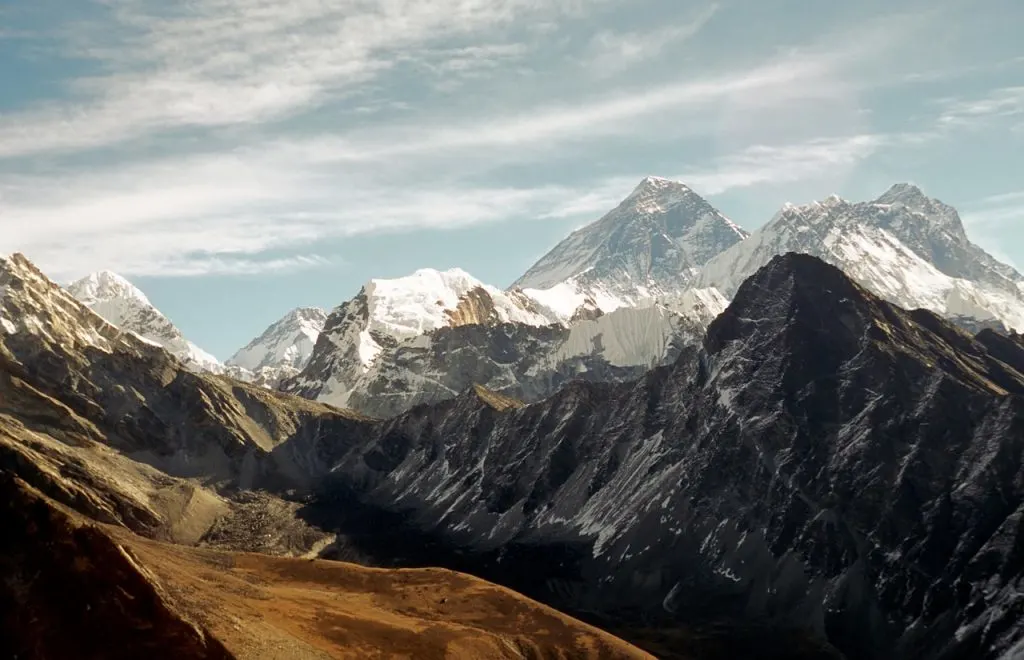
Tentative UNESCO World Heritage Sites In Nepal
If you haven’t quite had enough, Nepal also has tentative UNESCO sites which it has proposed but has yet to be ratified. These may or may not be included at a future date but are very telling in that they are what each country considers to be it’s cultural and/or natural heritage of outstanding universal value.
They typically are worthy candidates for inscriptions and should be of interest for adventurous travelers who want to explore under-the-radar spots before they become touristy. For Nepal, these sites are:
- The early medieval architectural complex of Panauti – The site includes the Indresvar Mahadev temple built-in 1294, the Brahmayani temple built in the 17th Century, and numerous heritage structures
- Tilaurakot, the archaeological remains of ancient Shakya Kingdom – The site is the cardinal point of the ancient Shakyan city of Kapilavastu, where Gautama Buddha spent 29 years of his lifetime.
- Cave architecture of Muktinath Valley of Mustang – Aka the Sky Caves of Nepal is an assortment of around 10,000 man-made caves dug into the sides of valleys in the Mustang District of Nepal. Research continues into these caves, but as of now, it is not well understood who built the caves and why they were built. So far, excavation has led to the discovery of valuable Buddhist paintings, sculptures, manuscripts, and numerous artifacts.
- The medieval palace complex of Gorkha – A unique and spectacular hilltop setting. Monuments include the medieval palace, cave of Gorakhnath, Kalika temple, and other monuments.
- Ramagrama, the relic stupa of Lord Buddha – The only undisturbed original stupa containing relics of Lord Buddha. Built-in 6th century B.C. and enlarged by being enveloped with bricks subsequently. The site includes adjacent monasteries.
- Khokana, the vernacular village, and its mustard-oil seed industrial heritage – A unique village that can be taken as a model of a medieval settlement pattern with a system of drainage and chowks. It houses chaityas and a Mother Goddess temple. The mustard-oil seed industry has become the living heritage of the village.
- Medieval Earthern Walled City of Lo Manthang -The capital of the former Kingdom of Lo was constructed in the 15th Century on a plateau at 3800 meters above sea level. The Lobas, inhabitants of Lo Manthang, are closely related culturally and ethnically to the people of Western and Central Tibet, and the culture is, to a large degree, defined by the Sakyapa traditions of Tibetan Buddhism. Even today, many of the ancient festivals, rituals, and ceremonies are being performed.
- Vajrayogini and early settlement of sankhu – A settlement dating back to the 2nd Century A.D. in the northeastern corner of the Kathmandu Valley on the ancient trade route to Tibet. The traditional Newari settlement still retains its medieval character with narrow streets, public squares within dispersed tiered temples, and rest houses. The Vajrayogini temple complex constructed in the mid 17th Century is located on the flanks of the hills 1.5 km north of Sankhu. Several monuments and freestanding statues surround the main tiered temple dedicated to the tantic goddess Vajrayogini.
- Medieval Settlement of Kirtipur – A medieval settlement located along a narrow ridge towards the southwest of the Kathmandu Valley. The medieval Newari settlement was developed with fort-like characteristics, and the victory over Kirtipur by the army from Gorkha is considered a pivotal moment in the history of the unification of Nepal.
- Rishikesh Complex of Ruru Kshetra – An important Hindu pilgrimage and crematory center mentioned in the mythological epics. The typical medieval temple complex presents various forms of interesting architecture. At the same time, the living heritage of Rishikesh of Ruru Kshetra is still preserved, with fairs and festivals being held regularly, ancient worship practices related to the propagation of Vedic rituals and culture and the practice of Bhaktini Amas (Female Mendicants).
- Nuwakot Palace – A fort-like complex built in the 18th Century on the ancient trade route from Kathmandu Valley to Tibet. The complex comprises of the main Nuwakot Palace and various temples and shrines, the most prominent being the Bhairab Temple.
- Ram Janaki Temple – According to literature, this is the birthplace of Goddess Sita, consort of Lord Rama. As a result, the Ram Janaki Temple is one of the holiest places for Hindus. It has a unique blend of classical and neo-classical design with elements of fortification as a result of its long history and remains an important site for pilgrimage.
- The Medieval Town of Tansen – A typical traditional town of Western Nepal located at an altitude of 1372 meters that is a testament to the living heritage and architecture of the Newari people. Various ruins, temples, monasteries, and sculptures also make this an interesting area to explore.
- Sinja valley – A proposed UNESCO site that encompasses the capital of the Khasas kingdom from the 12th to 14th centuries. The Sinja Valley was where the Nepali language originates from, and the earliest examples of the Devanagari script from the 13th Century were found on the cliffs and in nearby Dullu.
- Bhurti Temple Complex of Dailekh – A temple complexin Western Nepal that consists of 22 monuments. Currently, there are no worship practices taking place here, and exactly when and by whom this temple was constructed is unclear. The dry stone masonry construct, along with its style, form, and craftsmanship, is unique, however, and deserving of further investigation.
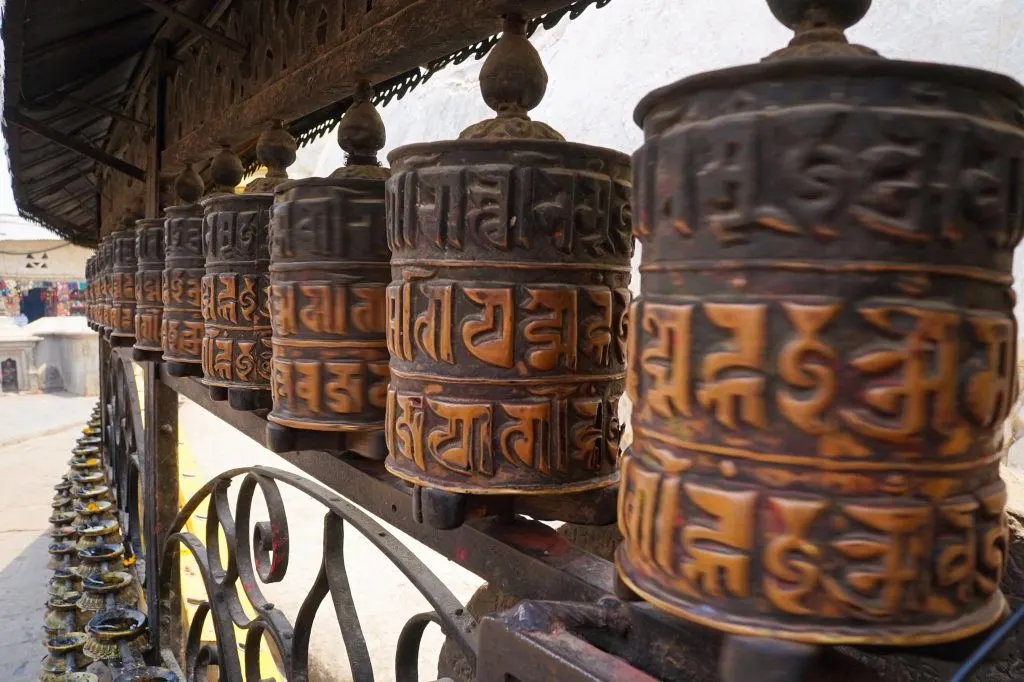
And there you have it—all of the world heritage sites in Nepal. Hopefully, you have learned something about this country’s history already through these sites. Maybe some of them have even inspired your future travels.
If you get the opportunity to visit, please make choices that encourage the protection of these special places for future generations. Happy exploring!
Happy exploring!
